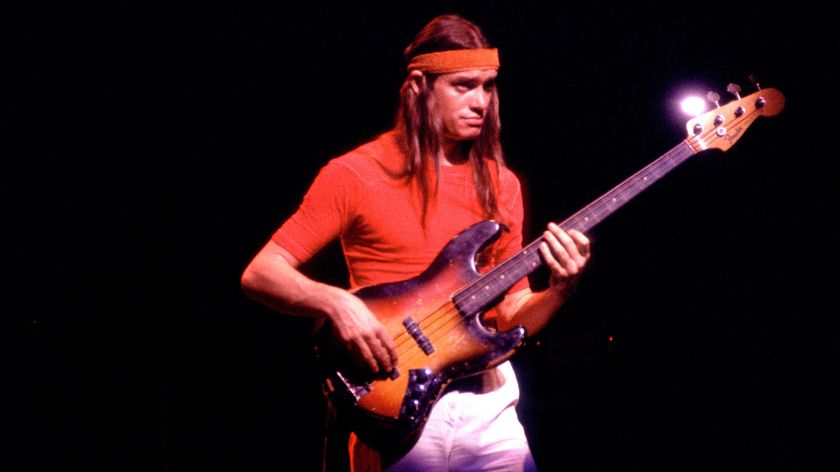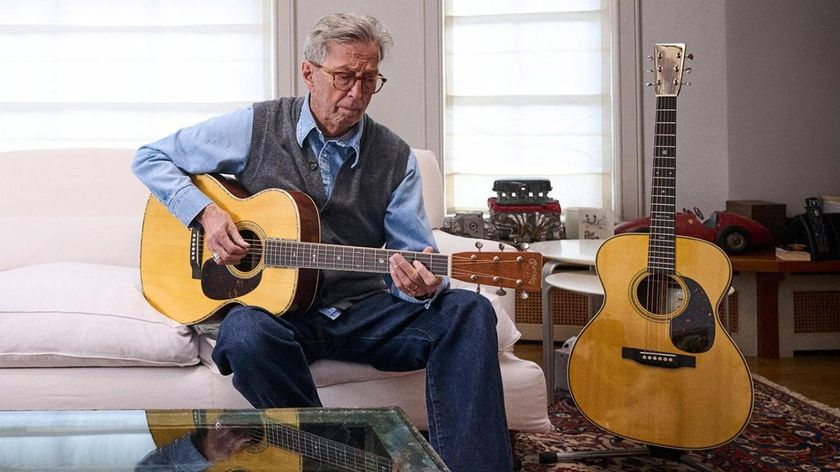6 career defining records of Aerosmith's Joey Kramer
Rock's grooviest drummer picks his finest
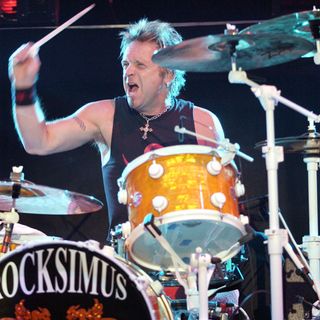
Joey Kramer
He’s one of the grooviest drummers in rock, blending raw power with a soul sensibility. Here, Aerosmith’s Joey Kramer shares six of his most memorable moments from the band’s outstanding back catalogue, telling Rhythm Magazine why they mattered so much along the way.
Next page: 'humble beginnings'...
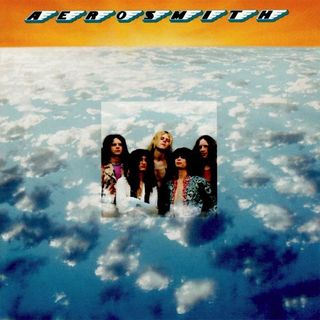
Aerosmith (1973)
From humble beginnings playing their first gig at a high school in 1970, two years later Aerosmith entered Boston’s Intermedia Studios with producer Adrian Barber to record their debut.
Joey Kramer says:
“That was the first time I had ever been in a recording studio to work. We had been playing those songs for probably the first two years that the band was together, so we went into the studio and did that album in about three weeks.”
“We had the material down because we had been playing it live and rehearsing it a lot, so we didn’t spend a whole lot of time in the studio. Plus we didn’t really know much about what we were doing anyway, so it didn’t matter much. That was the band playing live.”
“That’s how most of the records were done – we really prided ourselves on being a band, functioning and playing as a band. The only record that we really didn’t do that way was Just Push Play. Movin’ Out was the first song we all wrote together, the first song that everybody came up with their own parts for.”
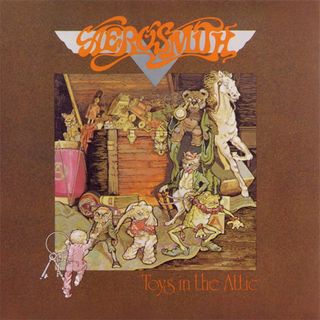
Toys In the Attic (1975)
Aerosmith’s third album, featuring killer tracks like Walk This Way and Sweet Emotion, saw the band perfect their sound, overlaying Joey and Tom Hamilton’s funky grooves with blistering guitar licks.
Joey Kramer says:
“Toys In The Attic was one of the many records that we did with Jack Douglas. Anything that you do with Jack is fun because he’s all about having fun. I have memories of doing Toys In The Attic and being on the floor next to my drums, on my back, laughing.”
“Tom, myself and Brad did most of the basic tracks on that record and we worked really hard with Jack. We had a good time doing all those records, but Toys In The Attic was just a lot of laughs. The record was a milestone in the career of the band. I think for a lot of people it’s still their favourite record. It’s one of my favourites.”
“In Walk This Way, there are three different figures in there: one for the verse, one for the pre-chorus, one for chorus. That’s what a song is all about, it’s got to have a start, a middle and a finish, just like everything else. That’s what makes life exciting.”
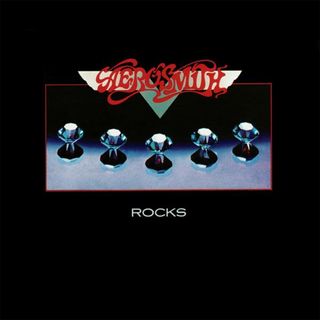
Rocks (1976)
Marking their third collaboration with producer Jack Douglas, Aerosmith hit the bull’s eye with Rocks, recording classic after classic, including Back In The Saddle, Last Child and Lick and A Promise.
Joey Kramer says:
“Rocks is definitely one of my favourite records. Rocks was done at a place that we called The Warehouse that was in Waltham, Massachusetts, and we used to rehearse there.”
“It was like our clubhouse; we did all our marketing and our Tshirts out of there; we did pre-production for the record there; we took the Record Plant mobile truck and put it inside The Warehouse and wired the big room that we rehearsed in, so instead of going any place we stayed right there and recorded the whole record.”
“I kind of associate Rocks with Pump. Pump to me is like a new-day version of Rocks, as far as lyrics, songwriting and playing. Rocks was a lot more sophisticated than anything else we had done. The playing was exceptional for the time and it really showcased us as a band. That’s where the whole package really came together musically.”
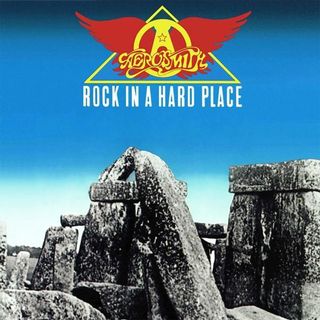
Rock In A Hard Place (1982)
After Brad Whitford and Joe Perry quit, Aerosmith recruited Jimmy Crespo to record Rock In A Hard Place, one of their heaviest albums, even as Steven Tyler battled heroin addiction.
Joey Kramer says:
“Rock In A Hard Place was a strange record because I was having a really good time playing, but I was also very stoned. Brad left the band while we were doing that record and Joe was already gone. Jimmy Crespo played all the guitar parts.”
“I was living in Boston, Steven was living in New York and Tom and I would go down to New York to record and go back to Boston to our families on the weekends. It’s good for what it was at the time.”
“I’ve rediscovered some things on that record. I remember talking to my son once and telling him how I came up with a new figure. I was in my rehearsal space noodling around and I came up with this great thing. I played it for him and he goes, ‘Dad, you played that on Rock In A Hard Place.’ When he told me that, I went back and listened to that record and there was some cool stuff on there. It’s great.”
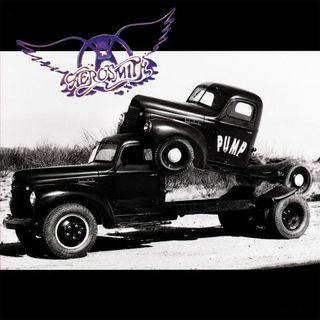
Pump (1989)
Following their comeback with 1987’s Permanent Vacation, Aerosmith’s second album with producer Bruce Fairburn was one of their most successful, featuring hits Love In An Elevator and Janie’s Got A Gun.
Joey Kramer says:
“I think I did some of my best playing on Pump. When we started to work with Bruce Fairburn on Permanent Vacation, I had never played with a click track. We got into the studio and he puts up the click track – I said to him, ‘What is that noise?’ He just assumed that I could do it.”
“Of course, playing with a click track is a science unto itself, so on Permanent Vacation I had to sacrifice four or five songs before I really got the hang of that. By the time we did Pump I was getting good. Pump was the first record that I had ever done completely sober.”
“Tom and I worked really hard and did all the playing together. I remember coming back from Vancouver with a letter from Tom [saying] how much he enjoyed working with me and that he was really proud to be a soldier in the same army I was in. He and I were pretty proud of that record.”
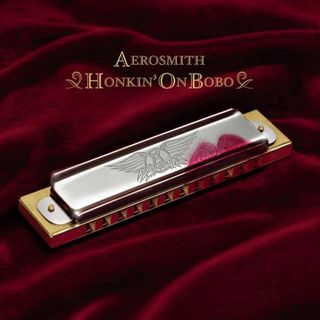
Honkin' On Bobo (2004)
The band’s 14th studio album took them back to their roots to cut a blistering collection of blues standards, reuniting Aerosmith with Jack Douglas for the first time since 1982.
Joey Kramer says:
“Honkin’ On Bobo was when we got back together with Jack. It’s a bunch of white guys playing the blues. We had wanted to do a blues album for a long time, and we had been putting it off and putting it off, so we came up with that bunch of songs, which was a project in itself.”
“I think we really caught the feel of those songs. We did that all in Joe’s basement studio. There were no singles or anything – it wasn’t a super commercially successful record, it was more about marking time for us as musicians and where we were at. I think it came out better than we had anticipated to begin with.”
“Baby Please Don’t Go we still play live. Stop Messin’ Around we still play too, that’s a song to give Steven a break from singing; Joe sings it and it gives everybody a chance to blow a little bit. We’ve played that song for years, it always seems to find its place in the set.”
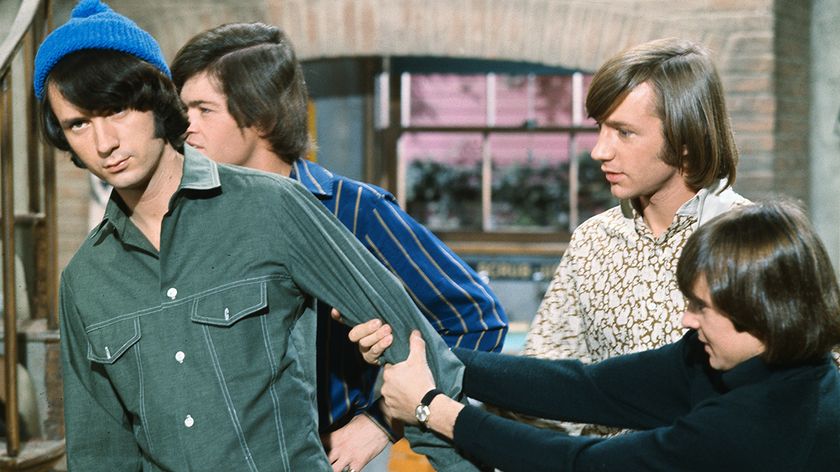
"They said, ‘Thank you, but no thank you - it’s not a Monkees song.’ He said, ‘Wait a minute, I am one of the Monkees! What are you talking about?’": Micky Dolenz explains Mike Nesmith's "frustration" at being in The Monkees

“There’s nights where I think, ‘If we don’t get to Paradise City soon I’m going to pass out!’”: How drummer Frank Ferrer powered Guns N’ Roses for 19 years

"They said, ‘Thank you, but no thank you - it’s not a Monkees song.’ He said, ‘Wait a minute, I am one of the Monkees! What are you talking about?’": Micky Dolenz explains Mike Nesmith's "frustration" at being in The Monkees

“There’s nights where I think, ‘If we don’t get to Paradise City soon I’m going to pass out!’”: How drummer Frank Ferrer powered Guns N’ Roses for 19 years


![Chris Hayes [left] wears a purple checked shirt and plays his 1957 Stratocaster in the studio; Michael J. Fox tears it up onstage as Marty McFly in the 1985 blockbuster Back To The Future.](https://cdn.mos.cms.futurecdn.net/nWZUSbFAwA6EqQdruLmXXh-840-80.jpg)



